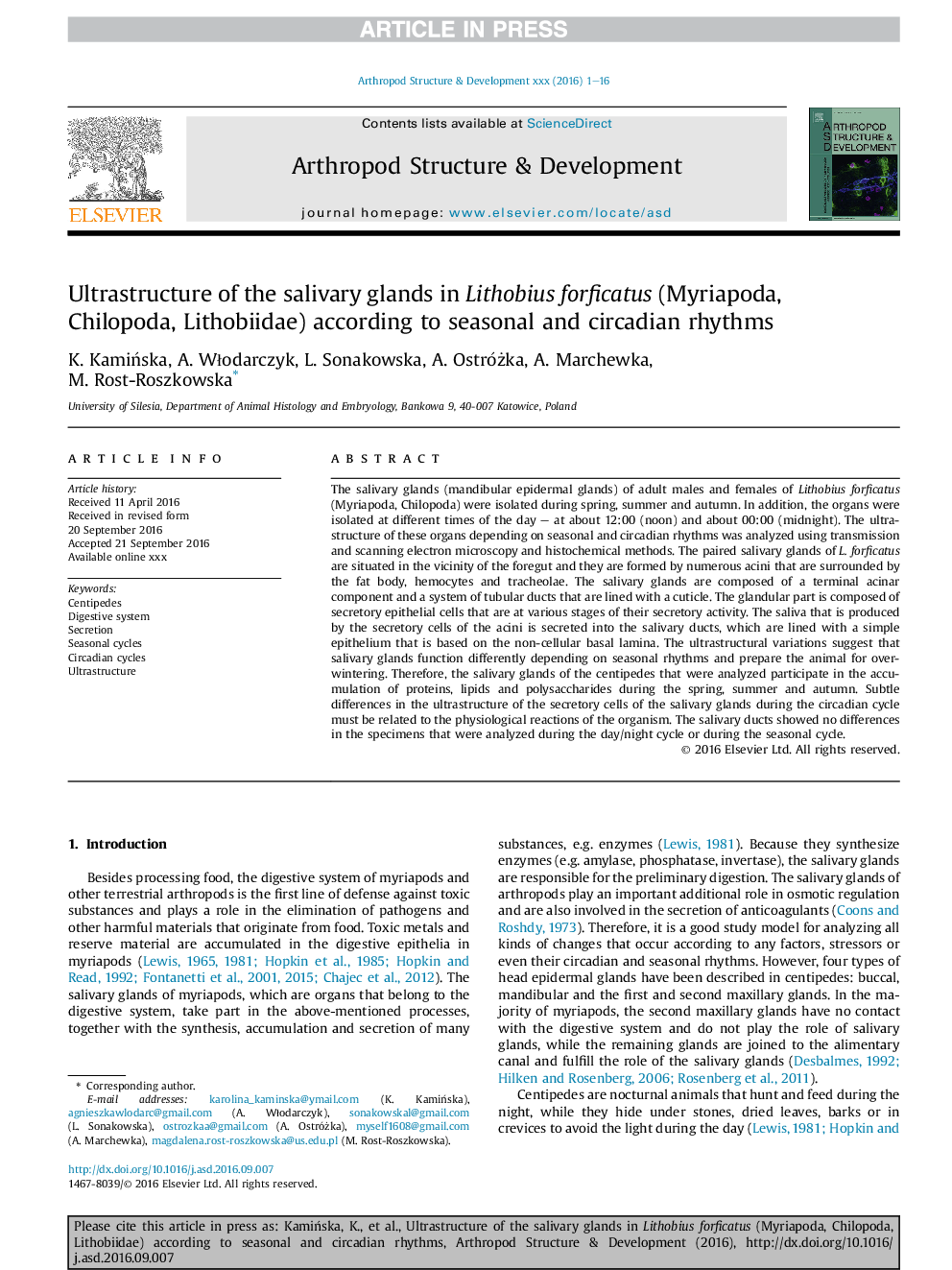| Article ID | Journal | Published Year | Pages | File Type |
|---|---|---|---|---|
| 5585001 | Arthropod Structure & Development | 2016 | 16 Pages |
Abstract
The salivary glands (mandibular epidermal glands) of adult males and females of Lithobius forficatus (Myriapoda, Chilopoda) were isolated during spring, summer and autumn. In addition, the organs were isolated at different times of the day - at about 12:00 (noon) and about 00:00 (midnight). The ultrastructure of these organs depending on seasonal and circadian rhythms was analyzed using transmission and scanning electron microscopy and histochemical methods. The paired salivary glands of L. forficatus are situated in the vicinity of the foregut and they are formed by numerous acini that are surrounded by the fat body, hemocytes and tracheolae. The salivary glands are composed of a terminal acinar component and a system of tubular ducts that are lined with a cuticle. The glandular part is composed of secretory epithelial cells that are at various stages of their secretory activity. The saliva that is produced by the secretory cells of the acini is secreted into the salivary ducts, which are lined with a simple epithelium that is based on the non-cellular basal lamina. The ultrastructural variations suggest that salivary glands function differently depending on seasonal rhythms and prepare the animal for overwintering. Therefore, the salivary glands of the centipedes that were analyzed participate in the accumulation of proteins, lipids and polysaccharides during the spring, summer and autumn. Subtle differences in the ultrastructure of the secretory cells of the salivary glands during the circadian cycle must be related to the physiological reactions of the organism. The salivary ducts showed no differences in the specimens that were analyzed during the day/night cycle or during the seasonal cycle.
Related Topics
Life Sciences
Agricultural and Biological Sciences
Insect Science
Authors
K. KamiÅska, A. WÅodarczyk, L. Sonakowska, A. Ostróżka, A. Marchewka, M. Rost-Roszkowska,
